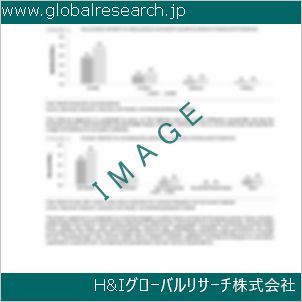Table of Contents
1 Industry Overview of Epoxidized soybean oil (ESO)
1.1 Definition and Specifications of Epoxidized soybean oil (ESO)
1.1.1 Definition of Epoxidized soybean oil (ESO)
1.1.2 Specifications of Epoxidized soybean oil (ESO)
1.2 Classification of Epoxidized soybean oil (ESO)
1.3 Applications of Epoxidized soybean oil (ESO)
1.3.1 Nuclear Application
1.3.2 Non-Nuclear Application
1.4 Industry Chain Structure of Epoxidized soybean oil (ESO)
1.5 Industry Overview and Major Regions Status of Epoxidized soybean oil (ESO)
1.5.1 Industry Overview of Epoxidized soybean oil (ESO)
1.5.2 Global Major Regions Status of Epoxidized soybean oil (ESO)
1.6 Industry Policy Analysis of Epoxidized soybean oil (ESO)
1.7 Industry News Analysis of Epoxidized soybean oil (ESO)
2 Manufacturing Cost Structure Analysis of Epoxidized soybean oil (ESO)
2.1 Raw Material Suppliers and Price Analysis of Epoxidized soybean oil (ESO)
2.2 Equipment Suppliers and Price Analysis of Epoxidized soybean oil (ESO)
2.3 Labor Cost Analysis of Epoxidized soybean oil (ESO)
2.4 Other Costs Analysis of Epoxidized soybean oil (ESO)
2.5 Manufacturing Cost Structure Analysis of Epoxidized soybean oil (ESO)
2.6 Manufacturing Process Analysis of Epoxidized soybean oil (ESO)
3 Technical Data and Manufacturing Plants Analysis of Epoxidized soybean oil (ESO)
3.1 Capacity and Commercial Production Date of Global Epoxidized soybean oil (ESO) Major Manufacturers in 2023
3.2 Manufacturing Plants Distribution of Global Epoxidized soybean oil (ESO) Major Manufacturers in 2023
3.3 R&D Status and Technology Source of Global Epoxidized soybean oil (ESO) Major Manufacturers in 2023
3.4 Raw Materials Sources Analysis of Global Epoxidized soybean oil (ESO) Major Manufacturers in 2023
4 Capacity, Production and Revenue Analysis of Epoxidized soybean oil (ESO) by Regions, Types and Manufacturers
4.1 Global Capacity, Production and Revenue of Epoxidized soybean oil (ESO) by Regions 2019-2024
4.2 Global and Major Regions Capacity, Production, Revenue and Growth Rate of Epoxidized soybean oil (ESO) 2019-2024
4.3 Global Capacity, Production and Revenue of Epoxidized soybean oil (ESO) by Types 2019-2024
4.4 Global Capacity, Production and Revenue of Epoxidized soybean oil (ESO) by Manufacturers 2019-2024
5 Price, Cost, Gross and Gross Margin Analysis of Epoxidized soybean oil (ESO) by Regions, Types and Manufacturers
5.1 Price, Cost, Gross and Gross Margin Analysis of Epoxidized soybean oil (ESO) by Regions 2019-2024
5.2 Price, Cost, Gross and Gross Margin Analysis of Epoxidized soybean oil (ESO) by Types 2019-2024
5.3 Price, Cost, Gross and Gross Margin Analysis of Epoxidized soybean oil (ESO) by Manufacturers 2019-2024
6 Consumption Volume, Consumption Value and Sale Price Analysis of Epoxidized soybean oil (ESO) by Regions, Types and Applications
6.1 Global Consumption Volume and Consumption Value of Epoxidized soybean oil (ESO) by Regions 2019-2024
6.2 Global and Major Regions Consumption Volume, Consumption Value and Growth Rate of Epoxidized soybean oil (ESO) 2019-2024
6.3 Global Consumption Volume and Consumption Value of Epoxidized soybean oil (ESO) by Types 2019-2024
6.4 Global Consumption Volume and Consumption Value of Epoxidized soybean oil (ESO) by Applications 2019-2024
6.5 Sale Price of Epoxidized soybean oil (ESO) by Regions 2019-2024
6.6 Sale Price of Epoxidized soybean oil (ESO) by Types 2019-2024
6.7 Sale Price of Epoxidized soybean oil (ESO) by Applications 2019-2024
6.8 Market Share Analysis of Epoxidized soybean oil (ESO) by Different Sale Price Levels
7 Supply, Import, Export and Consumption Analysis of Epoxidized soybean oil (ESO)
7.1 Supply, Consumption and Gap of Epoxidized soybean oil (ESO) 2019-2024
7.2 Global Capacity, Production, Price, Cost, Revenue, Supply, Import, Export and Consumption of Epoxidized soybean oil (ESO) 2019-2024
7.3 USA Capacity, Production, Price, Cost, Revenue, Supply, Import, Export and Consumption of Epoxidized soybean oil (ESO) 2019-2024
7.4 EU Capacity, Production, Price, Cost, Revenue, Supply, Import, Export and Consumption of Epoxidized soybean oil (ESO) 2019-2024
7.5 China Capacity, Production, Price, Cost, Revenue, Supply, Import, Export and Consumption of Epoxidized soybean oil (ESO) 2019-2024
7.6 Japan Capacity, Production, Price, Cost, Revenue, Supply, Import, Export and Consumption of Epoxidized soybean oil (ESO) 2019-2024
8 Major Manufacturers Analysis of Epoxidized soybean oil (ESO)
8.1 Manufacturer One
8.1.1 Company Profile
8.1.2 Product Picture and Specifications
8.1.2.1 Type I
8.1.2.2 Type II
8.1.2.3 Type III
8.1.3 Capacity, Production, Price, Cost, Gross and Revenue
8.1.4 Contact Information
8.2 Manufacturer Two
8.2.1 Company Profile
8.2.2 Product Picture and Specifications
8.2.2.1 Type I
8.2.2.2 Type II
8.2.2.3 Type III
8.2.3 Capacity, Production, Price, Cost, Gross and Revenue
8.2.4 Contact Information
8.3 Manufacturer Three
8.3.1 Company Profile
8.3.2 Product Picture and Specifications
8.3.2.1 Type I
8.3.2.2 Type II
8.3.2.3 Type III
8.3.3 Capacity, Production, Price, Cost, Gross and Revenue
8.3.4 Contact Information
8.4 Manufacturer Four
8.4.1 Company Profile
8.4.2 Product Picture and Specifications
8.4.2.1 Type I
8.4.2.2 Type II
8.4.2.3 Type III
8.4.3 Capacity, Production, Price, Cost, Gross and Revenue
8.4.4 Contact Information
8.5 Manufacturer Five
8.5.1 Company Profile
8.5.2 Product Picture and Specifications
8.5.2.1 Type I
8.5.2.2 Type II
8.5.2.3 Type III
8.5.3 Capacity, Production, Price, Cost, Gross and Revenue
8.5.4 Contact Information
…
9 Marketing Trader or Distributor Analysis of Epoxidized soybean oil (ESO)
9.1 Marketing Channels Status of Epoxidized soybean oil (ESO)
9.2 Traders or Distributors with Contact Information of Epoxidized soybean oil (ESO) by Regions
9.3 Ex-work Price, Channel Price and End Buyer Price Analysis of Epoxidized soybean oil (ESO)
9.4 Regional Import, Export and Trade Analysis of Epoxidized soybean oil (ESO)
10 Industry Chain Analysis of Epoxidized soybean oil (ESO)
10.1 Upstream Major Raw Materials Suppliers Analysis of Epoxidized soybean oil (ESO)
10.1.1 Major Raw Materials Suppliers with Contact Information Analysis of Epoxidized soybean oil (ESO)
10.1.2 Major Raw Materials Suppliers with Supply Volume Analysis of Epoxidized soybean oil (ESO) by Regions
10.2 Upstream Major Equipment Suppliers Analysis of Epoxidized soybean oil (ESO)
10.2.1 Major Equipment Suppliers with Contact Information Analysis of Epoxidized soybean oil (ESO)
10.2.2 Major Equipment Suppliers with Product Pictures Analysis of Epoxidized soybean oil (ESO) by Regions
10.3 Downstream Major Consumers Analysis of Epoxidized soybean oil (ESO)
10.3.1 Major Consumers with Contact Information Analysis of Epoxidized soybean oil (ESO)
10.3.2 Major Consumers with Consumption Volume Analysis of Epoxidized soybean oil (ESO) by Regions
10.4 Supply Chain Relationship Analysis of Epoxidized soybean oil (ESO)
11 Development Trend of Analysis of Epoxidized soybean oil (ESO)
11.1 Capacity, Production and Revenue Forecast of Epoxidized soybean oil (ESO) by Regions and Types
11.1.1 Global Capacity, Production and Revenue of Epoxidized soybean oil (ESO) by Regions 2024-2029
11.1.2 Global and Major Regions Capacity, Production, Revenue and Growth Rate of Epoxidized soybean oil (ESO) 2024-2029
11.1.3 Global Capacity, Production and Revenue of Epoxidized soybean oil (ESO) by Types 2024-2029
11.2 Consumption Volume and Consumption Value Forecast of Epoxidized soybean oil (ESO) by Regions, Types and Applications
11.2.1 Global Consumption Volume and Consumption Value of Epoxidized soybean oil (ESO) by Regions 2024-2029
11.2.2 Global and Major Regions Consumption Volume, Consumption Value and Growth Rate of Epoxidized soybean oil (ESO) 2024-2029
11.2.3 Global Consumption Volume and Consumption Value of Epoxidized soybean oil (ESO) by Types 2024-2029
11.2.4 Global Consumption Volume and Consumption Value of Epoxidized soybean oil (ESO) by Applications 2024-2029
11.3 Supply, Import, Export and Consumption Forecast of Epoxidized soybean oil (ESO)
11.3.1 Supply, Consumption and Gap of Epoxidized soybean oil (ESO) 2024-2029
11.3.2 Global Capacity, Production, Price, Cost, Revenue, Supply, Import, Export and Consumption of Epoxidized soybean oil (ESO) 2024-2029
11.3.3 USA Capacity, Production, Price, Cost, Revenue, Supply, Import, Export and Consumption of Epoxidized soybean oil (ESO) 2024-2029
11.3.4 EU Capacity, Production, Price, Cost, Revenue, Supply, Import, Export and Consumption of Epoxidized soybean oil (ESO) 2024-2029
11.3.5 China Capacity, Production, Price, Cost, Revenue, Supply, Import, Export and Consumption of Epoxidized soybean oil (ESO) 2024-2029
11.3.6 Japan Capacity, Production, Price, Cost, Revenue, Supply, Import, Export and Consumption of Epoxidized soybean oil (ESO) 2024-2029
12 New Project Investment Feasibility Analysis of Epoxidized soybean oil (ESO)
12.1 New Project SWOT Analysis of Epoxidized soybean oil (ESO)
12.2 New Project Investment Feasibility Analysis of Epoxidized soybean oil (ESO)
13 Conclusion of the Global Epoxidized soybean oil (ESO) (CAS 8013-07-8) Industry 2024 Market Research Report
| ※参考情報 エポキシ化大豆油(ESO)は、大豆油を原料とし、エポキシ化反応によって得られる主要な植物性オイルの一つです。この物質は、その化学的特性から、多岐にわたる産業分野で利用されています。以下に、エポキシ化大豆油の定義、特徴、種類、用途、関連技術について詳しく説明いたします。 エポキシ化大豆油は、主に脂肪酸がグリセリンとエステル結合を形成したトリグリセリドから構成される植物由来のオイルであり、これをエポキシ化することによって、オレイン酸やリノール酸などの不飽和脂肪酸にエポキシ基が導入されます。エポキシ基は、反応性が高く、他の化学物質と結びつきやすいため、エポキシ化大豆油は化学合成における重要な中間体として機能します。 エポキシ化大豆油の特徴は、その持つ優れた物理的および化学的特性です。まず第一に、優れたエラストマー能力があります。これは、エポキシ基の導入によって柔軟性が増し、ゴムのような特性を持つことから来ています。また、耐薬品性や耐熱性も向上し、さまざまな環境でも安定して使用できることが特長です。さらに、植物由来であるため、生分解性があり、環境への負荷が少ないという利点もあります。 エポキシ化大豆油にはいくつかの種類が存在します。一般的には、異性体の違いや処理方法によって異なる特性をもつ製品が市販されています。これには、エポキシ化の程度や、他の添加物とのブレンドに応じた製品が含まれます。また、エポキシ化大豆油は、他のプラスチック添加剤やポリマーと組み合わせて使用されることが多く、特定の用途に応じて最適化されることがあります。 エポキシ化大豆油の主な用途は多岐にわたります。まず、プラスチック産業においては、柔軟剤や可塑剤としての利用が一般的です。特に、ポリ塩化ビニル(PVC)などの合成樹脂において、エポキシ化大豆油が添加されることで、柔軟性や耐久性が向上します。これにより、製品の性能が高まり、長寿命化が促進されます。 また、塗料やコーティング剤においても、エポキシ化大豆油は重要な役割を果たしています。これらの製品にエポキシ化大豆油を添加することによって、耐水性や耐薬品性が向上し、塗装面の性能が改善されます。さらに、エポキシ化大豆油は、接着剤やシーラントの製造にも用いられ、特に生分解性の要求される環境において、その重要性が増しています。 農業分野でも、エポキシ化大豆油は利用されています。バイオ農薬や農業用肥料の添加物として使われることがあり、植物生長を助ける機能性材料としての特性が期待されています。エポキシ化大豆油は、植物の病害抵抗性を向上させることが示されています。 また、最近ではエポキシ化大豆油はバイオマス資源としても注目されています。再生可能な資源としての側面を持ちながら、高性能な材料を提供することから、持続可能な製品の開発が進められています。これにより、環境に優しい製品の提供が可能となり、循環型社会の実現に寄与することが期待されています。 一方で、エポキシ化大豆油の製造に関する技術も進化を続けています。エポキシ化の反応条件の最適化や、新たな触媒の開発によって、より効率的で持続可能な製造プロセスが模索されています。また、添加剤やブレンド材料の開発も進んでおり、用途に応じた多様な特性を持つ製品が市場に投入されています。 そのため、エポキシ化大豆油に関する研究開発は今後も続けられ、新たな応用技術や製品の誕生が期待されます。環境への配慮が重要視される現代において、エポキシ化大豆油はその持つ特性から、重要な役割を果たす材料として注目されています。 このように、エポキシ化大豆油はその多様な特性と機能から、幅広い産業分野で利用されており、今後もその需要は高まっていくことでしょう。エポキシ化技術の進展とともに、持続可能で環境に優しい製品の開発が進むことを期待しています。 |
❖ 免責事項 ❖
http://www.globalresearch.jp/disclaimer












